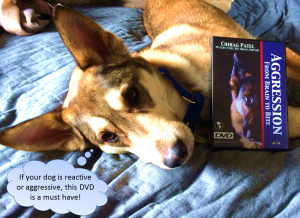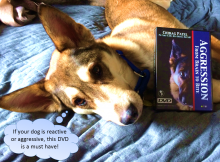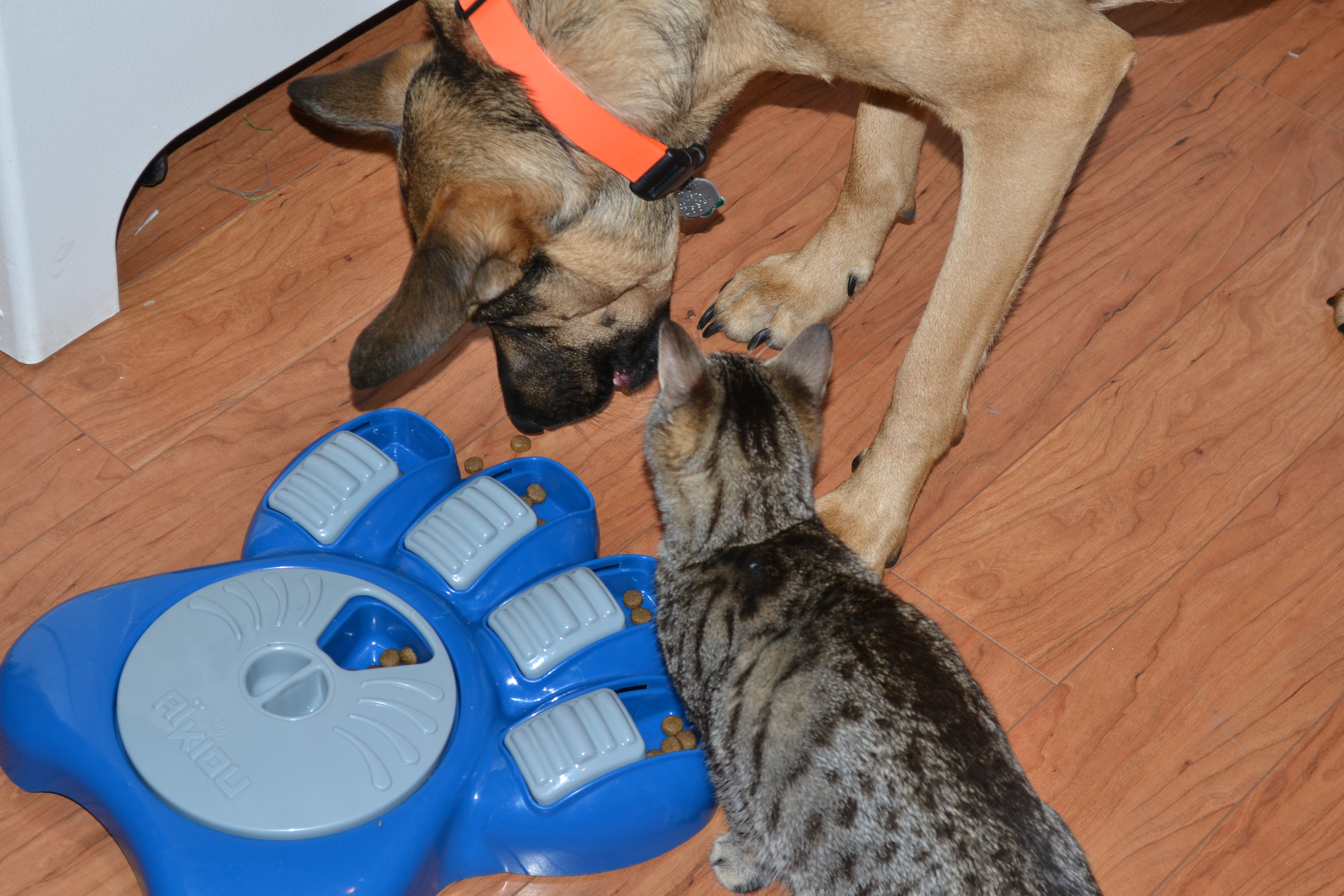This past week several things reminded me that doing nothing and teaching your dog to just “do nothing” is incredibly important in hyper-active and reactive dogs.
Relaxation for On-Leash Reactivity
 The first of these reminders was watching a DVD by Chirag Patel called Aggression: From Brain to Bite. I’m over half way through and I am really happy with what I’ve heard so far. He strongly emphasizes working with the dog at a distance and taking your time with the dog. His exercises really teach you to watch and listen to your dog. Training doesn’t move forward unless the dog is ready and responds when you ask. You stop when the dog wants to stop and you retreat when the dog is ready to move away. So simple! But it has been hard to implement with my own dog, Loker. It truly is easier to work with clients than your personal dog. There’s a little voice in the back of my head always whispering – “He should know better!” But the truth is, the more I rush through stuff, the more likely he is to fail. So I shall persevere…
The first of these reminders was watching a DVD by Chirag Patel called Aggression: From Brain to Bite. I’m over half way through and I am really happy with what I’ve heard so far. He strongly emphasizes working with the dog at a distance and taking your time with the dog. His exercises really teach you to watch and listen to your dog. Training doesn’t move forward unless the dog is ready and responds when you ask. You stop when the dog wants to stop and you retreat when the dog is ready to move away. So simple! But it has been hard to implement with my own dog, Loker. It truly is easier to work with clients than your personal dog. There’s a little voice in the back of my head always whispering – “He should know better!” But the truth is, the more I rush through stuff, the more likely he is to fail. So I shall persevere…
The second reminder about how important relaxation is actually came from a client in my Leash Aggression Classroom. I teach a lot of stuff in the classroom, but it hadn’t yet struck me how extremely important relaxation is in the process of working with a reactive dog. Every client gets a free 30 minute phone consultation with me and it turned out to be an extremely important resource for this client! During our talk, I discovered that she was taking her reactive dog to doggy daycare a few times a week and was constantly exercising him in order to “wear him out.” Seems logical until you really think about it. Like people, dogs who experience that level of activity everyday become accustomed to it and adapt to it – after all, that is what the body is made to do! Instead of really becoming worn out, dogs adjust and tend to need more and more exercise to reach that level of exhaustion every day. Also, with that level of activity every day, the body has no time to calm down. Adrenaline and stress hormones are released every day and are never allowed to return to “normal” since it takes 3-7 days for them to leave the system.
The last and final reminder happened yesterday when Loker reacted towards a dog that goes around the neighborhood with his owners barking his head off. The dog is large which is even more intimidating to Loker. I walked out my front door with Loker on leash for a training session. I heard them starting their way down our street and thought “Loker should be able to handle this!” I thought a little Click the Trigger would be enough – but it wasn’t. It was way too much for Loker to be able to handle. He did his best to redirect his attention to me, but was clearly worried about this dog. I should have gone back inside and performed Click the Trigger from inside the house, looking out a window. I think that would have been the best place for us to be with that particular dog. Anyways, I pushed my dog too far and he failed despite his best efforts. I forget that he spent his first 2.5 years of life at a shelter and had extremely limited real-world experience! This whole “strange dogs and their people walking by me and my human” is probably terrifying to him. He probably feels that his safety is compromised and that there is a real threat to his well-being. I so wish he could speak English so that I could tell him there is nothing to fear! What I need to do is go back to basics. Let him get habituated with this neighborhood and the people who walk by every day. That means, hangin’ out on the front porch to watch the world go by. I’ll need to refresh his relaxation skills and take those on the road with me. Personally, I’m excited that our training sessions will be as simple as sit and do nothing!
Here is a video I did a few months ago that demonstrates the relaxation exercise I learned from Suzanne Clothier in February.
You’ll definitely be seeing an update on our progress in the future as well as a few (hopefully) uneventful videos!
“Feeling socially connected, safe, and self-reliant reduces cortisol.”
If you’re up for a little extra reading, check this article on cortisol. It is written for humans, but dogs have the same problems as well! Take a look: “Why the Stress Hormone is Public Enemy #1″




